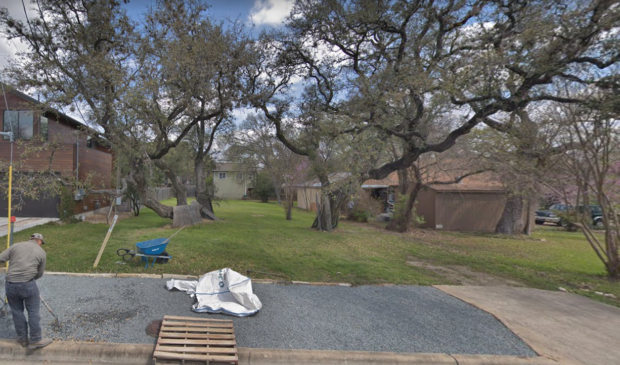Scraped lots are not entitled to variances because of tree placement
Thursday, February 14, 2019 by
Jessi Devenyns Generally, when trees are the cause of a variance request, the Board of Adjustment is quite accommodating. After all, considering all the good trees do for the environment and the city’s stringent protections for them, it can be difficult for homeowners simply to remove them.
Still, despite this historical pattern, the Board of Adjustment does not make decisions based on precedent.
At the Feb. 11 meeting of the board, members voted to deny a variance that would shrink a backyard setback from 10 feet to 5 feet due to constraints that three large trees imposed on the property. The design includes an accessory dwelling unit over a detached garage. Based on testimony, the motion was substituted for a motion to postpone until the March 11 meeting, which was passed unanimously.
The initial denial was based on the fact that the lot in question at 1604 Juliet St. currently has no building on it. So board members were having trouble finding the hardship that would validate the approval of a code variance, calling the request instead a “design issue.”
“You have the ability to build within code,” explained Board Member Michael Von Ohlen. He said that if the case was presented as a remodel with an existing structure still standing, a different set of considerations may have led to support for the requested variance.
However, as the site is unencumbered – except for three trees with protected status – the board suggested the architect consider moving the house forward. The front yard setback in the design is 50 feet.
“You can also make that house smaller,” offered Chair William Burkhardt as another option.
Thomas Conyers, the architect representing the homeowner, said that the presented design was consistent with the parameters of the original structures on the property that were demolished a decade ago.
“(Accessory dwelling units) are a nice amenity if you can afford one but they are not an entitlement if the lot doesn’t allow,” explained Board Member Don Leighton-Burwell, who noted that the designs in the original survey were not consistent with modern city code.
Board Member Eric Goff opined that homeowners should not be “punished” for devising creative architectural solutions to accommodate trees. “The city has very strong tree rules … and so we should work with someone to be able to build a home that has multiple protected trees,” he said.
The majority of the board members found that it was more a question of the homeowner’s chosen design that required him to request a variance, not the placement of the trees.
Board Member Brooke Bailey noted that that one of the adjacent neighbors objected strongly to the project and that the board had received 10 letters of objection, including one from the Zilker Neighborhood Association.
Conyers presented 21 signed statements in favor of the variance, including three from adjoining properties.
In order to give the architect and the homeowner another chance to reimagine their design to be more consistent with code and more agreeable to the neighborhood, the board postponed the hearing until its March 11 meeting.
The Austin Monitor’s work is made possible by donations from the community. Though our reporting covers donors from time to time, we are careful to keep business and editorial efforts separate while maintaining transparency. A complete list of donors is available here, and our code of ethics is explained here.
You're a community leader
And we’re honored you look to us for serious, in-depth news. You know a strong community needs local and dedicated watchdog reporting. We’re here for you and that won’t change. Now will you take the powerful next step and support our nonprofit news organization?



